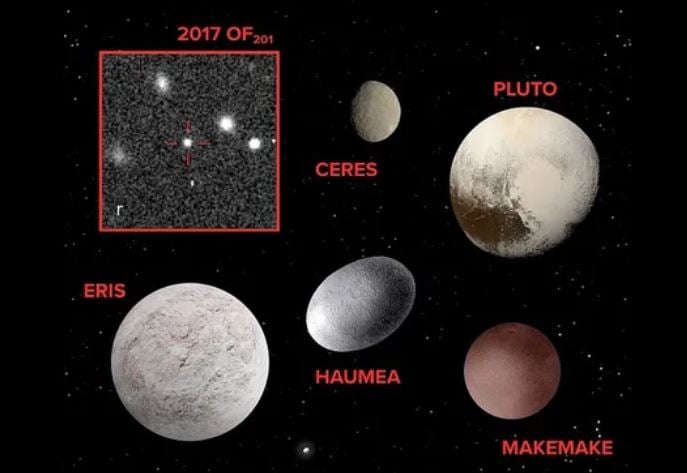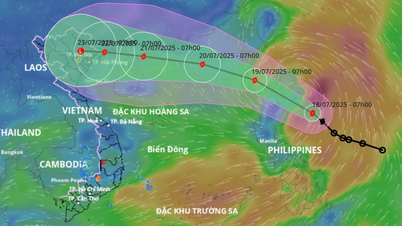
A composite image comparing the relative sizes of known dwarf planets in our solar system, including the newly discovered planet OF201 in 2017.
2017 OF201 is a nearly spherical object about 700 kilometers (435 miles) in diameter that was discovered during an analysis of archival data from the Blanco Telescope in Chile and the Canada-France-Hawaii Telescope in Hawaii. Researchers tracked the object's motion through 19 sets of images taken over seven years. The discovery has been confirmed by the International Astronomical Union's Minor Planet Center, although it has not yet undergone formal peer review, and has been posted on the arXiv preprint server.
According to scientists , 2017 OF201 has a very long and elongated orbit, with its closest point to the sun being about 45 astronomical units (AU), which is 45 times the distance from Earth to the sun. This is also the same distance as another famous dwarf planet, Pluto. Based on orbital calculations, the last time this celestial body flew past the sun was in 1930 - the same year Pluto was discovered. Currently, it is twice that distance from the sun and continues to move away into space. At its furthest point in its orbit, 2017 OF201 can be as far as 1,600 AU before returning to the inner solar system.
The strange orbit of 2017 OF201 suggests that it is influenced by complex gravitational interactions, not just with Neptune but with the gravity of the entire galaxy. “It is possible that this object was initially ejected into the Oort cloud – the most distant region of the solar system that is home to many comets – and then pulled back,” said study co-author Sihao Cheng, an astrophysicist at the Institute for Advanced Study in Princeton, New Jersey.
Since it spends only about 1% of its orbit close enough to be detected from Earth, the appearance of 2017 OF201 suggests that there are many more similar dwarf planets that have yet to be observed. “The existence of such a single object suggests that there may be hundreds of others with similar orbits and sizes that are currently beyond our observational capabilities,” Cheng added.
The discovery also raises new questions about the theory of Planet Nine — a large, unconfirmed planet thought to orbit the sun at a distance of billions of miles beyond Neptune. Some scientists have suggested that Planet Nine could be responsible for unusual concentrations in the orbits of some trans-Neptunian objects. However, 2017 OF201 doesn’t fit those models perfectly. Researchers say that if Planet Nine does exist, its gravity could have pushed 2017 OF201 out of the solar system long ago.
“Although advances in telescope technology have allowed us to see farther into the universe, there are still countless mysteries about our own solar system that we have yet to uncover ,” Cheng concluded.
Source: https://doanhnghiepvn.vn/cong-nghe/phat-hien-hanh-tinh-lun-moi-an-minh-o-ria-he-mat-troi-quay-quanh-mat-troi-moi-25-000-nam/20250524023715641




![[Video] More than 100 universities announce tuition fees for the 2025–2026 academic year](https://vphoto.vietnam.vn/thumb/1200x675/vietnam/resource/IMAGE/2025/7/18/7eacdc721552429494cf919b3a65b42e)

























































































![[Infographic] In 2025, 47 products will achieve national OCOP](https://vphoto.vietnam.vn/thumb/402x226/vietnam/resource/IMAGE/2025/7/16/5d672398b0744db3ab920e05db8e5b7d)





Comment (0)